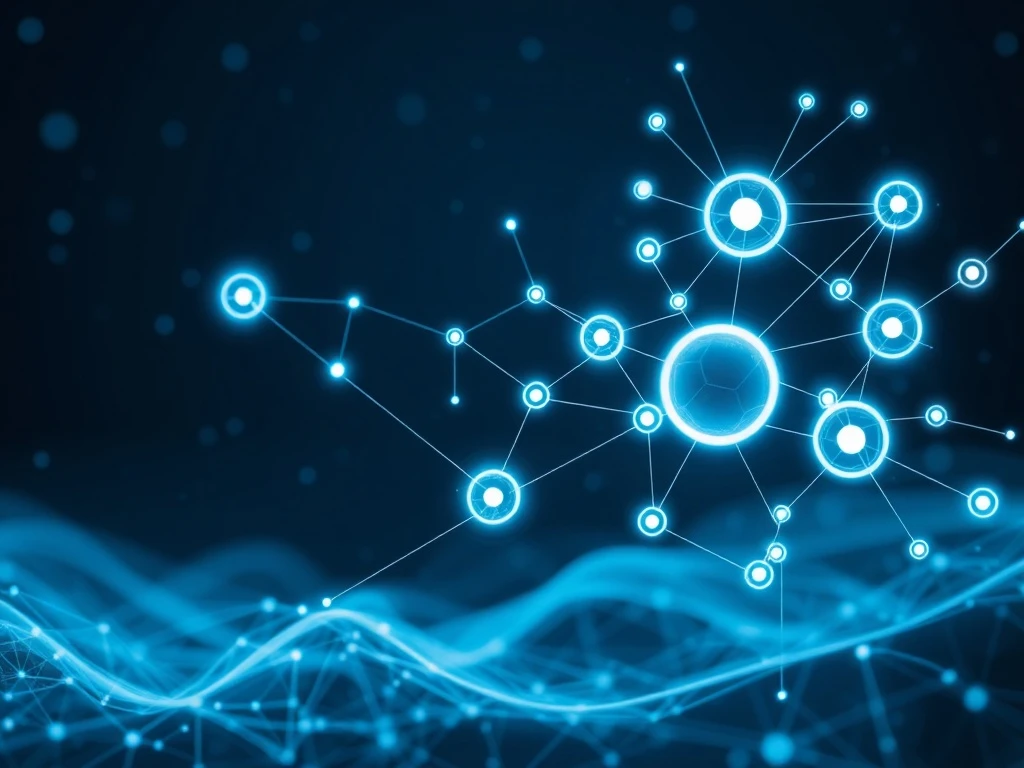The landscape of enterprise technology is rapidly evolving. Businesses increasingly seek innovative solutions to navigate the complexities of decentralized environments. Integrating artificial intelligence (AI) into existing operations often presents significant hurdles. These challenges include extensive custom coding requirements and prolonged deployment cycles. However, a new paradigm is emerging. Atua AI (TUA), a leading decentralized AI-powered productivity platform, has launched a groundbreaking solution. Its new Atua AI workflow templates promise to accelerate enterprise AI integration dramatically. These pre-configured frameworks simplify automation deployment across Web3 ecosystems.
Overcoming Hurdles in Enterprise AI Integration
Integrating AI capabilities into large-scale enterprise operations can be daunting. Traditional methods often demand substantial development resources and specialized technical expertise. Companies face lengthy development timelines. They also encounter high costs associated with bespoke AI solutions. Furthermore, the decentralized nature of Web3 environments adds another layer of complexity. Businesses operating on blockchain networks require robust, adaptable AI tools. These tools must interact seamlessly with smart contracts, decentralized autonomous organizations (DAOs), and various multichain protocols. Without efficient frameworks, businesses struggle to harness AI’s full potential. They miss opportunities for enhanced productivity and operational efficiency. Atua AI recognizes these critical pain points. Its innovative Atua AI workflow templates directly address these challenges. They offer a streamlined path to advanced AI adoption.
Atua AI Workflow Templates: Revolutionizing Decentralized Automation
Atua AI has unveiled its new suite of Atua AI workflow templates. These templates represent a significant leap forward in enterprise AI integration. They are pre-configured, ready-to-use automation pathways. These pathways empower businesses and developers to adopt AI-powered workflows quickly. They eliminate the need for extensive custom coding. This dramatically reduces time-to-deployment. Essentially, these templates act as intelligent blueprints. They guide businesses through complex AI implementations. Moreover, they are built on Atua AI’s modular architecture. This design ensures unparalleled flexibility. Users can easily customize each template. This allows them to match their organization’s unique operational logic. Businesses gain immediate access to sophisticated AI capabilities. This facilitates faster decision-making and improved operational agility.
Streamlined Deployment and Rapid Adoption
The introduction of these templates fundamentally changes how enterprises approach AI. Firstly, they provide a plug-and-play solution. This drastically cuts down development time. Secondly, the pre-built nature of Atua AI workflow templates means businesses can deploy complex AI functions in days, not months. This rapid adoption capability is crucial in fast-moving Web3 markets. Furthermore, it lowers the technical barrier for entry. Even organizations without deep in-house AI expertise can now leverage powerful AI tools. Consequently, more businesses can innovate and compete effectively. This marks a significant shift towards more accessible and efficient AI integration.
Diverse Applications of Atua AI Workflow Templates
The utility of these new templates spans a wide range of critical business functions. Atua AI has designed them for versatility and impact. Several key areas stand to benefit immediately:
- Smart Contract Monitoring: Enterprises can deploy templates for real-time surveillance of smart contract activities. This ensures compliance and identifies anomalies swiftly. Consequently, potential security risks are mitigated.
- DAO Coordination: Decentralized autonomous organizations often face coordination challenges. Atua AI workflow templates automate governance processes. They streamline proposal management and voting mechanisms. This enhances efficiency and transparency within DAOs.
- Content Generation: AI-powered content creation is transforming marketing and communication. Templates enable rapid generation of reports, articles, and marketing copy. This boosts productivity for content teams.
- Decentralized Compliance Reporting: Navigating regulatory landscapes in Web3 is complex. These templates automate the collection and reporting of compliance data. They ensure adherence to evolving standards across various blockchain networks.
These diverse applications demonstrate the transformative power of Atua AI workflow templates. They provide practical solutions for real-world business needs.
Unlocking Customization and Multichain Compatibility
A core strength of Atua AI’s new offering lies in its adaptability. The Atua AI workflow templates are not rigid. Instead, they are highly customizable. This modular design allows businesses to tailor each template precisely. They can align workflows with their specific operational requirements. This level of flexibility ensures that the AI solutions truly serve the unique needs of each enterprise. Furthermore, these templates support multichain requirements. They integrate seamlessly with major blockchain networks. These include Ethereum, BNB Chain, and XRP Ledger. This broad compatibility is crucial. It allows businesses to leverage AI across their entire decentralized infrastructure. The ability to customize and operate across multiple chains makes these templates incredibly powerful. They offer a truly future-proof solution for enterprise AI.
Strategic Advantages for Web3 Enterprises
Adopting Atua AI workflow templates offers significant strategic advantages. Firstly, businesses can implement intelligent workflows much faster. This rapid deployment translates into quicker time-to-market for new products and services. Secondly, operations become more scalable. As businesses grow, their AI infrastructure can expand effortlessly. This ensures sustained efficiency. Thirdly, the technical barrier for AI adoption is significantly lowered. Even organizations with limited in-house AI expertise can now integrate advanced capabilities. Finally, these templates help maintain reliable performance. This is critical in high-demand blockchain environments. Enterprises gain a competitive edge. They optimize processes, reduce operational costs, and enhance overall productivity. This strategic move positions Atua AI as a vital partner for businesses navigating the evolving Web3 landscape.
Atua AI’s Vision: Empowering Decentralized Productivity
The launch of these workflow templates aligns perfectly with Atua AI’s overarching mission. The platform aims to empower enterprises with intelligent, flexible tools. These tools facilitate real-time, decentralized automation. Atua AI believes that AI should be accessible and adaptable. It should serve the dynamic needs of the Web3 space. Beyond these new templates, Atua AI offers a comprehensive suite of AI-powered productivity and creativity tools. These include:
- Chat: For intelligent conversational AI.
- Writer: For AI-assisted content creation and editing.
- Imagine: For generating unique visual content.
- Voiceover: For transforming text into natural-sounding speech.
- Classifier: For data categorization and analysis.
Each tool contributes to a holistic ecosystem. This ecosystem empowers users with intelligent, decentralized solutions. Atua AI workflow templates enhance this ecosystem. They bridge the gap between individual AI tools and large-scale enterprise applications.
The Future of Enterprise AI is Here
Atua AI’s deployment of Atua AI workflow templates marks a pivotal moment. It signifies a major advancement in enterprise AI integration within the Web3 space. These pre-built automation frameworks simplify complex processes. They accelerate AI adoption for businesses worldwide. By lowering technical barriers and offering unparalleled customization, Atua AI empowers organizations. They can now harness the full power of decentralized AI more efficiently than ever before. This innovation will undoubtedly drive greater efficiency, scalability, and competitive advantage. Ultimately, Atua AI is shaping the future of intelligent, decentralized business operations.
Frequently Asked Questions (FAQs)
Q1: What are Atua AI workflow templates?
A1: Atua AI workflow templates are pre-configured, ready-to-use automation frameworks. They allow businesses and developers to rapidly integrate AI-powered solutions into their decentralized operations. These templates simplify complex tasks and reduce the need for extensive custom coding.
Q2: How do these templates accelerate enterprise AI integration?
A2: These templates provide structured pathways for common AI applications, such as smart contract monitoring and DAO coordination. By offering pre-built solutions, they significantly reduce the time and technical effort required for deploying AI. This enables faster adoption and implementation.
Q3: Which blockchain networks do Atua AI workflow templates support?
A3: The templates are designed with multichain compatibility. They currently support prominent networks including Ethereum, BNB Chain, and XRP Ledger. This broad support ensures flexibility for businesses operating across various decentralized environments.
Q4: Can Atua AI workflow templates be customized for specific business needs?
A4: Yes, absolutely. Built on Atua AI’s modular architecture, the templates are highly customizable. Users can easily modify them to align with their organization’s unique operational logic and specific requirements.
Q5: What types of tasks can these workflow templates automate?
A5: Atua AI workflow templates can automate a wide range of tasks. These include smart contract monitoring, facilitating DAO coordination, generating various forms of content, and ensuring decentralized compliance reporting.
Q6: How do these templates benefit businesses in the Web3 space?
A6: Businesses in the Web3 space benefit by achieving faster deployment, enhanced scalability, and lower technical barriers to AI adoption. The templates improve operational efficiency, reduce costs, and ensure reliable performance in high-demand blockchain environments.




















